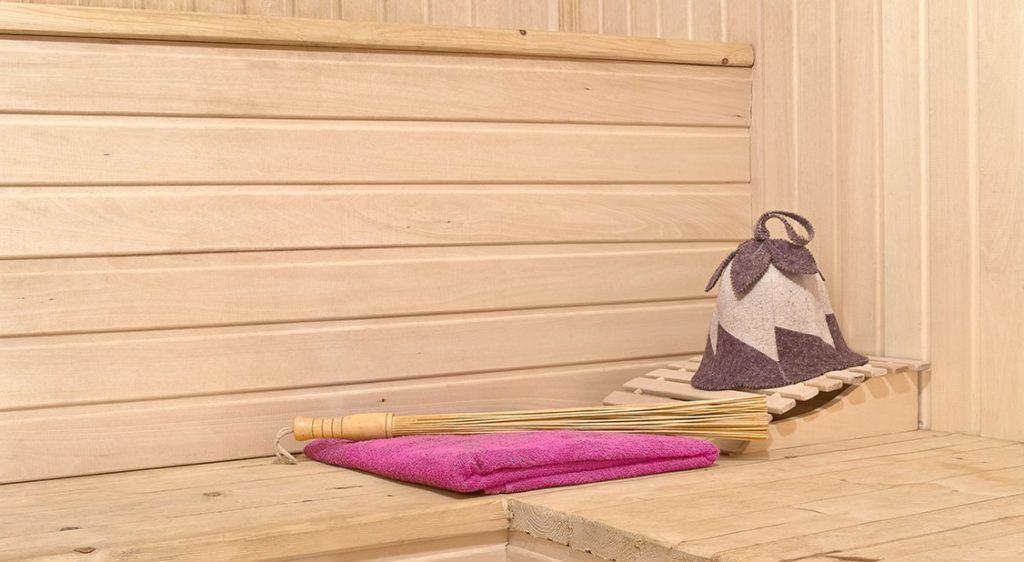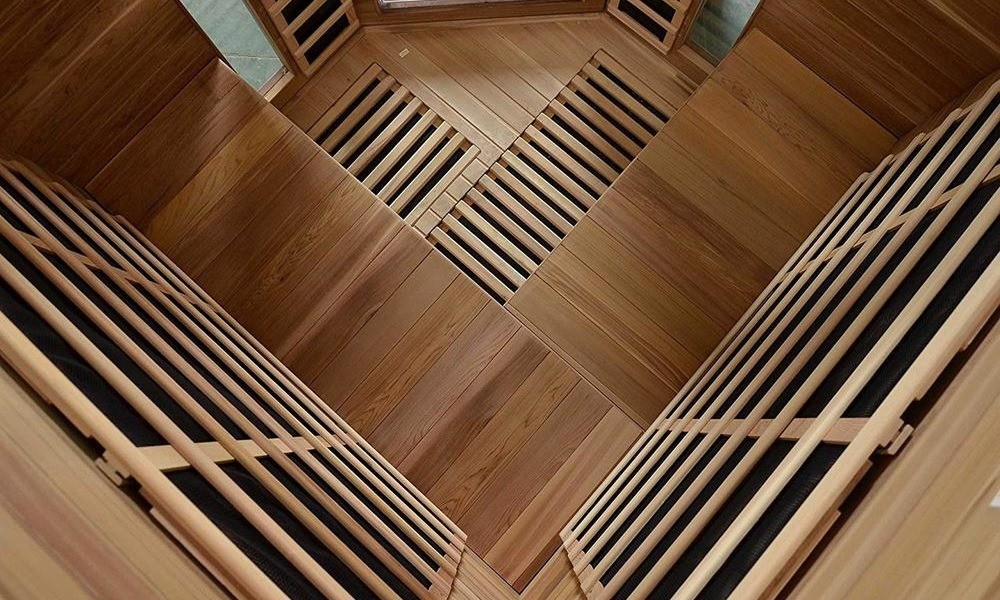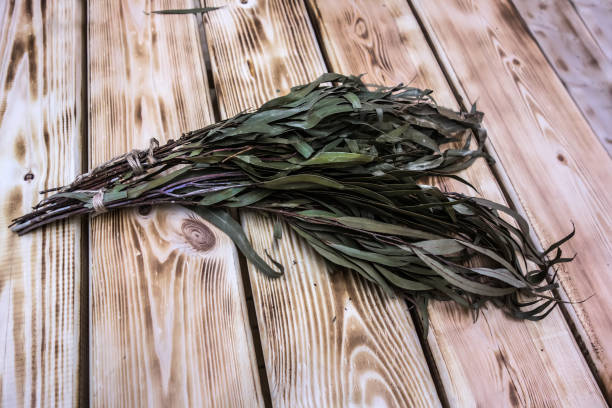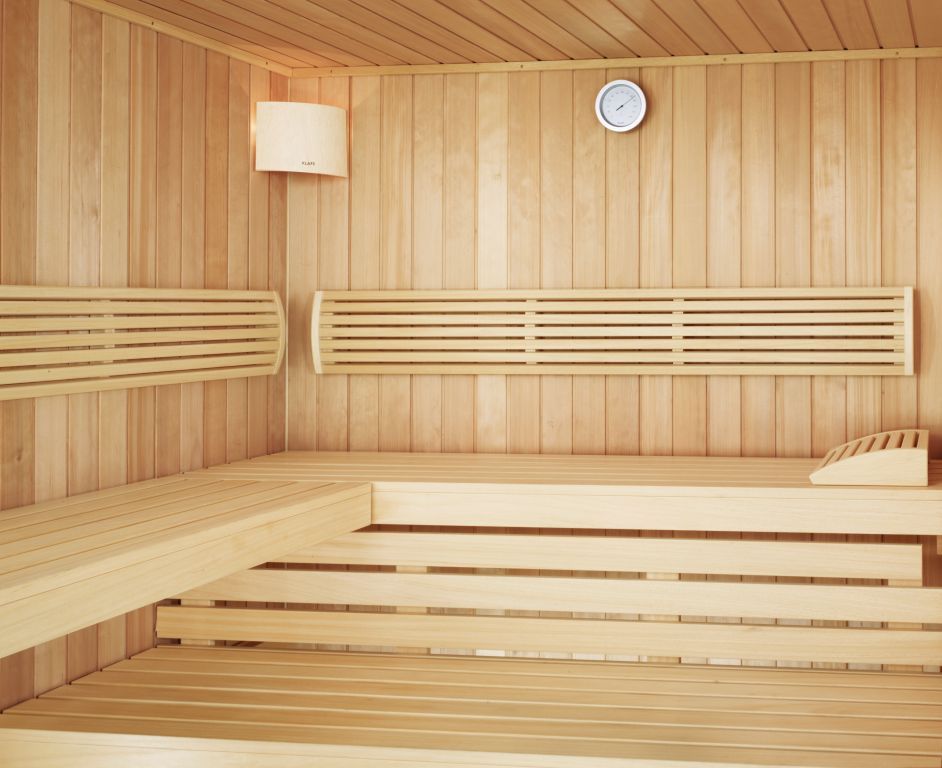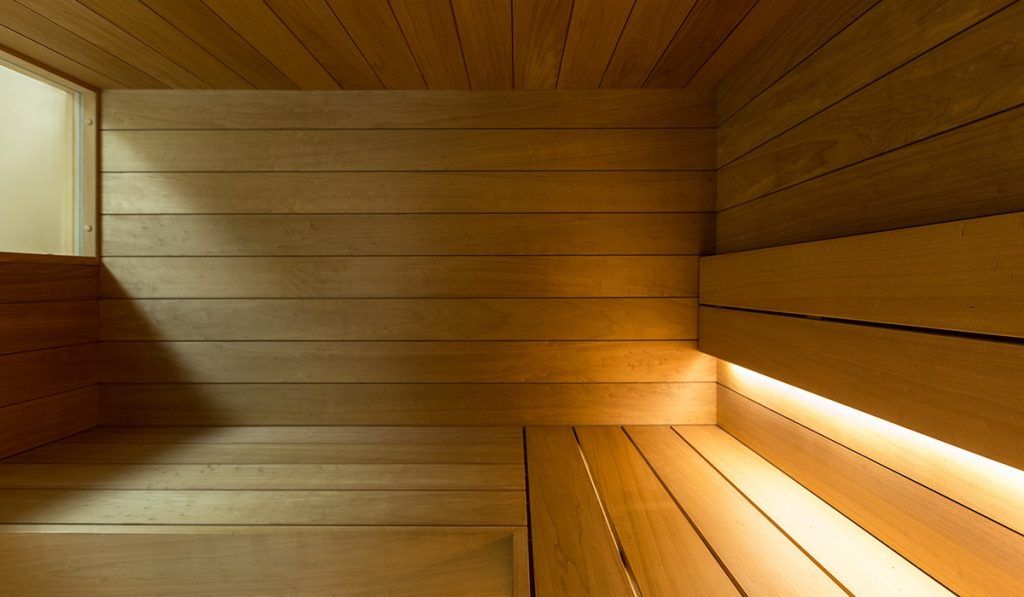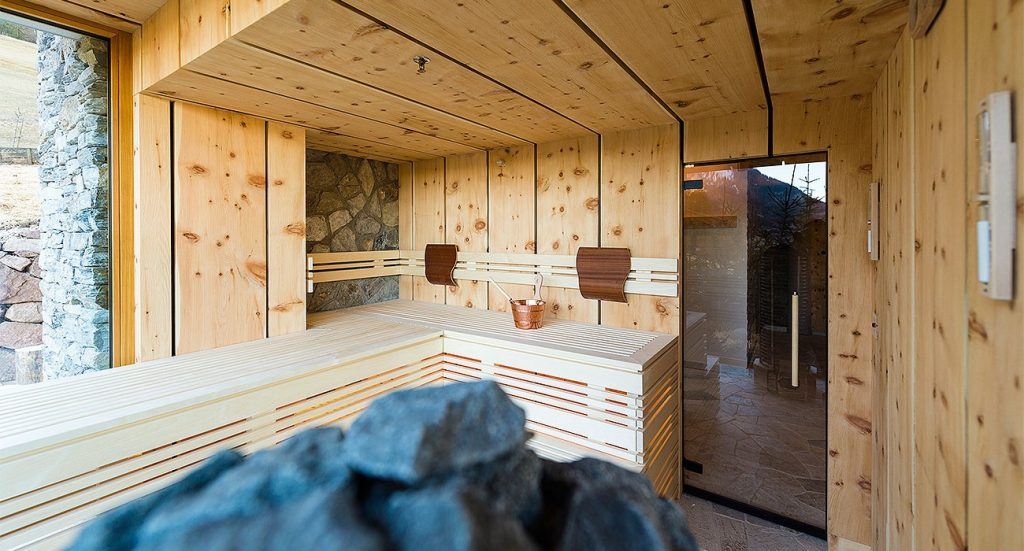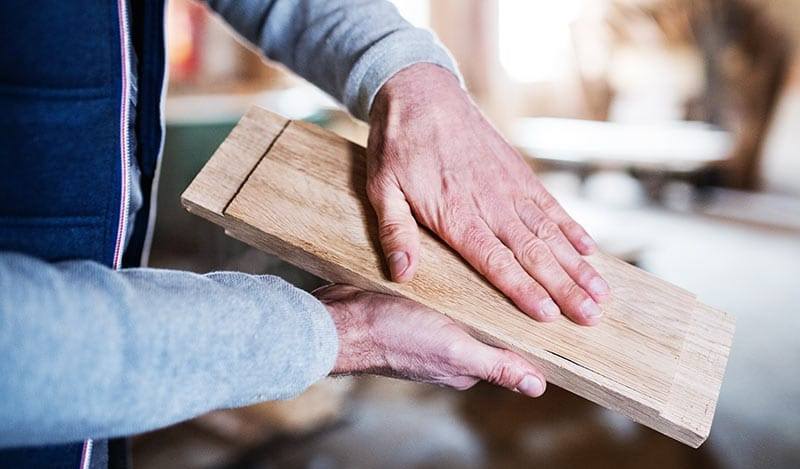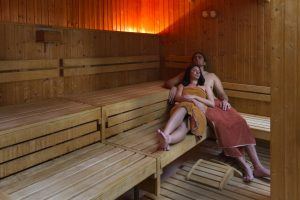People who have decided to invest in a sauna for its numerous health benefits tend to forget about one crucial decision – what kind of wood do you use?
While this might seem inconsequential to some, the material used for a sauna can actually bring many advantages (or disadvantages). So choosing the right one is essential.
Read my review down below and what type of wood fits your needs and preferences best!
Infrared Sauna Wood Options
What kind of wood is used in a sauna?
1. Basswood – #1 Choice For Individuals With Sensitive Skins
Scientific Name: Tilia Americana highest
Abundant In: North America (east portion)
Scent: None
Basswood is a material with a very pale white to light brown color. Its mild hues make it easy to fit into the look of most homes without much effort. Aside from that, here are some other benefits you can enjoy when picking Basswood:
- Basswood is hypoallergenic. If you suffer from allergic reactions, this feature is a must.
- It’s odorless. Some people prefer a home sauna experience without the woody smell.
- It’s resistant to high temperatures. If appropriately prepared, Basswood is very durable and will last you a long time.
- Durable
- Nontoxic
- Easy to work with
- Odorless
- Mild colors fit will with most room designs
- If you prefer a material with a natural fragrance, you’re better off using a different one.
Summary: Basswood is an excellent choice if you have an allergic condition or prefer a scent-free experience.
2. Western Red Canadian Cedar Wood – Best For Durability
Scientific Name: Thuja Plicata (western red cedar)
Abundant In: Canada / Pacific North-West US
Scent: Highly aromatic
Another favorite material, Red Cedar is bright and flashy, featuring hues of red and purple (similar to redwood), and light brown. Unlike the single-noted look of some materials (like Basswood), red cedar sports a beautiful mix of different colors.
This appearance might be a bit harder to incorporate in some homes, but that doesn’t detract from the pleasing aesthetic of cedar structures!
- It imparts a unique and calming scent. Experts have found that a compound in cedar (called heliotropin) helps improve your sleeping experience and reduce stress.
- It has insect-repelling properties. Many studies show that cedar oil (oils) acts as a natural deterrent against insect pests.
- It’s long-lasting. The combined moisture- and heat-resistant qualities of cedar ensure that it will last you a long time with proper maintenance. This is why cedar infrared sauna construction options are highly regarded because they boast high durability and effective relaxation.
- Aromatic
- Durable
- Heat-resistant
- Natural insect repellent
- Moisture-resistant
- Might be harder to work with design-wise
- Might cause mild eye or skin irritation for aromatherapy-sensitive individuals
Summary: Cedar brightly colored material that’s always a good option because of its calming aroma, high durability, and natural insect-repelling properties.
3. Eucalyptus – For An Authentic Style
Scientific Name: Eucalyptus globulus
Abundant In: Australia
Scent: none
Eucalyptus is consistent and durable. It sports very neutral colors of light to deep brown (sometimes with a slightly reddish hue), so you won’t have a hard time finding a place for it in your home.
- It’s affordable. Eucalyptus grows very quickly and is easy to produce, so you can easily find a supplier that provides quality pieces at low prices.
- It’s odorless. This is a good feature if you’re aromatherapy-sensitive.
- It’s highly durable. There have been instances where untreated eucalyptus lasted for 24 years. So this material is sure to last you a long time.
- Odorless
- Multiple color options
- Durable
- Affordable.
- Rot-resistant
- Lack of scents might be a disadvantage to some
- Non-hypoallergenic
Summary: Eucalyptus is a highly durable material that’s an excellent choice if you’re looking for an odorless option with different color options.
4. Hemlock Wood – Popular for Its Low Price
Scientific Name: Tsuga canadensis
Abundant In: North America (east portion)
Scent: Present
It is another option that’s popularly used because of its calming scent and very low price point. I only recommend this if you’re going to build a residential traditional sauna as opposed to an outdoor one because hemlock is more prone to decay than other materials.
- It’s budget-friendly. You’ll have no trouble looking for hemlock that’s outside of your desired price range.
- It imparts a good aroma. Hemlock’s scent is deep and calming. It’s also very strong, so the smell lasts a long time.
- It sports a consistent look. You might prefer a wooden material with a cleaner look as opposed to one with many color striations.
- Very budget-friendly
- Can look good in most homes
- Strong scent
- Not as durable as Basswood or Cedar
- Only recommended for indoor units
Summary: I recommend Poplar if you’re looking for a budget-friendly, aromatic option that has a clean and consistent look.
5. Poplar – An Attractive Choice in Terms of Availability
Scientific Name: Populus
Abundant In: the Northern Hemisphere
Scent: None
Poplar is beautifully colored with white to pale yellow variants with straight, uniform grains. Despite being highly resistant to damage, it’s a material that’s easy to shape and work with.
- It’s easy to source. Since poplar grows in plenty of regions, you’ll have an easier time finding a supplier.
- It’s hypoallergenic. Sauna Poplar doesn’t release any allergy-inducing phenols when subjected to heat.
- It sports a clean and modern look. The pale look of Poplar can easily complement the aesthetics of most modern homes.
- Highly available
- Hypoallergenic
- Modern look
- Durable
- Not the best choice for those who prefer an aromatic experience
Summary: I recommend Poplar if you’re looking for a robust and odorless material with a neutral and adaptable look.
6. Pine Wood – Popular for Its Low Price
Scientific Name: Pinus
Abundant In: the Northern Hemisphere
Scent: distinctive natural aroma
Pinewood is one of if not the cheapest sauna wood options that might not have the durability of Cedar, but it will still last you a good number of years that you can easily extend with proper maintenance.
- Pinewood is moisture resistant. With this material, you don’t have to worry about shrinking or swelling.
- It releases a calming aroma. Many people pick Pinewood for this reason alone. However, it has also been known to cause an allergic reaction to a few individuals, so its best to find out first if you’re allergic.
- You have multiple color options to choose from. Pinewood is available in reds, yellows, and browns.
- Affordable
- Broad color range
- Moisture-resistant
- Unique scent
- Not as durable as Basswood or Cedar
- Best for indoor units
Summary: Pinewood is an excellent choice if you want an aromatic material that provides a bit more freedom when it comes to color availability.
Why Are Saunas Made Of Wood?
So why are saunas made of wood? Interestingly enough, the term ‘sauna’ is derived from a Finnish word that means “room of wood.” Wooden structures are preferred over anything else for several reasons:
- Heat Insulation
Can you imagine going inside one made entirely out of metal? The whole surface would be too uncomfortable to touch, let alone sit on.
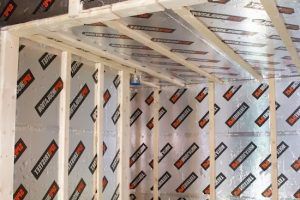
It also keeps the heat inside the structure much more efficiently.
- Hygiene
Wood has natural antiseptic and antibacterial properties. And as long as it prepared correctly, you shouldn’t have any problems with mold or bacterial growth.
- Air Quality
Unlike plastic materials, it doesn’t impart any off-odors when heated. Depending on the material, you can opt for an odorless experience or one that’s enhanced with a natural scent.
- Aesthetics
The neatly aligned rows of planks used for building a sauna just gives a lot more aesthetic appeal than any other material. It imparts a relaxing atmosphere that makes you feel closer to the natural environment.
- Cleaning and Maintenance
Contrary to popular belief, this material is actually not that hard to manage. Cleaning and maintenance don’t require too much of your time and effort to keep your unit in excellent condition.
Summary: Wooden constructs are popular because they’re natural heat insulators, hygienic, heat-resistant, and easy to maintain.
What’s a Sauna?
Saunas are individual rooms or enclosed spaces that are meant to generate and trap heat.
People stay in these rooms for short periods to refresh their body, but recent studies have been attributing the use of saunas with other benefits, such as:
Traditional saunas typically use hot steam as a heat medium. But recently, more and more are making the switch to the electric infrared sauna because they produce a gentler heat while imparting the same, if not better, advantages.
Summary: Saunas are heat-retaining rooms that individuals use for recreational or health purposes.
Which Sauna Wood Type is Most Often Used?
hemlock, cedar, basswood, and poplar are often used woods for saunas. Pine & Eucalyptus can be used. Cedar possesses a rich aroma and is often used to build a sauna. Poplar is natural wood and is best for sensitive people.
Also, it depends on the location and the purpose. Most public units feature scentless materials so they can suit a more extensive range of users. Personal units can widely vary because owners will often choose a material that fits the aesthetic of their homes.
Summary: Most public sauna and bathhouses use odorless materials to account for hypoallergenic or smell-sensitive individuals.
Is Hemlock Wood Toxic?
It is probably one of the most misunderstood plants in the world. The common belief that is most commonly heard that is just totally false. It is the Hemlock tree that is toxic. Why is the Hemlock Wood Poisonous? The Hemlock tree is in the hemlock genus which is one of the most poisonous plant families in the world. Even though it is not that poisonous, the tree has such a strong and distinctive smell that it makes people want to touch it. In time, they will also notice that if they come into contact with the sap of the tree, it can cause irritation on their skin and be harmful. And as they continue to deal with the sap on their skin, it may lead to problems with their lungs, and digestive system or cause them to cough up a lot of phlegm.
Luckily, the tree is not that poisonous so it’s safe to eat if you’re not allergic to it. However, this tree can cause problems for people if they have kidney problems or high blood pressure. But when it comes having an irritated stomach, can cause a lot of discomforts. This wood can also be very poisonous if you are exposed to it in large amounts. However, in small amounts, people don’t really know the real damage it can cause to their bodies. More Facts About Hemlock Wood. It can be found growing in many places around the world. However, it is the forests of Appalachia and New England that it is most often found. In other places, it can be found in areas like the Mediterranean and South America as well. If you find this and other trees growing around you, don’t take it. Instead, move it to somewhere else where you can appreciate its beauty and view it from a distance.
Is Basswood Rot Resistant?
Basswood rot, or Conkle’s disease, is an epidemic fungus that feeds on fresh rot and spreads to living oak. It is responsible for the millions of holes that we see all over the East. As with the bark-eating fungi that grow on Douglas Fir trees, and other new, and old rot diseases, the fungus eventually destroys the tissue that makes up a tree’s vascular system, causing limbs to break and die.
Because of the tree’s extremely shallow roots, little or no secondary growth can occur if basswood rot becomes established, which makes tree removal necessary. One thing that makes basswood rot so devastating is that it has a much higher survival rate in basswood than in its “hardier” host tree species. Unlike some of the other “new rot” diseases, the roots of a basswood tree have little chance to become infected until the disease.
Eucalyptus vs Cedar Sauna
Of the two, the cream-of-the-crop are the trees and the sauna experience of the ancient indigenous Mesoamericans. Instead of the heat and steam, these trees and their clusters of smooth bark create and detect the natural cooling and warming cycles of the earth, and in a less brain-rattling effect than even winter’s cold snap, allow one to enjoy a sweltering sauna experience. Today, a sauna is most often a hulking steel-encased cube of wood, steel, and stone. Many of these saunas are found in Chinese steam baths or on a beach in Turkey.
Interestingly, the steel saunas were constructed in the late 1930s in the United States when they were away for the educated class to escape the heat of a big city and enjoy a pleasant solitary experience. As such, they tend or a country farmhouse that doesn’t feel so hot. Most have the brand name Saunas Uta (or similar) imprinted on the side, indicating they were designed in Finland. But the sauna is a centuries-old Nordic creation and a smaller sauna at the turn of the century at Columbia University would have been no more elaborate than a hand-cranked searing oven.
Is Cedar Sauna Toxic?
Scientists have managed to isolate a part of the fungus associated with UTI symptoms. They found that the endosymbiont—that is, the fungi that live on the walls of the bladder—produces a metabolite that is dangerous to the human body. In addition, scientists discovered that the fungus is attached to the cells of the host bladder. This indicates that these tiny bladders might be involved in the production of harmful substances.
Scientists used this information to work out how the amount of fungus in the bladder might vary with the severity of the infection. The findings have been published in the latest issue of the Journal of Urology. The article is titled “Diversity of Endosymbionts of Human Bladder Microbiota and Their Role in Bacterial Urinary Infections.
What Factors Are Considered When Picking Sauna Wood?
- Scent
You might opt to go for a scentless unit if you’re highly sensitive to smells. It’s also a wise choice to test if you have an adverse reaction to the wood beforehand since aromatic woods occasionally cause skin irritation.
- Lifespan
Not every material can last in the moisture and heat-heavy environment of a sauna without getting damaged.
So if you can afford it, choose one that’s highly durable to save you the potential costs of repairs and replacements.
Be prepared and learn how to treat sauna wood the proper way before you make your decision.
- Availability
Some woods are rarer than some. Always check if what you want is available in your area. For example, you might find abundance in hemlock wood for sale if you live in America, but options for Eucalyptus units are limited.
Summary: Aside from the obvious looks factor, you also need to look out for the scent, lifespan, and availability when choosing a material.
Is Pine OK to Use in a Sauna?
Nuts are not recommended for direct sun exposure. If your dog happens to be under the sun, the fat contained in the nuts can cause sunburn. The fat and oil can also lead to skin irritation, possibly leading to skin irritation in dogs. In contrast, pine tree extracts are excellent natural moisturizers. If your dog’s skin is dry, you might try soaking your dog in a tub of water infused with pine tree extract.
If your dog has allergies, be aware that pine pollen is extremely irritating to the skin. Many dogs will react to pine trees without even having been in the yard or have symptoms that don’t immediately clear up. Pine tree extracts should be avoided in places where pets are banned from consuming tree sap, such as saunas and pools, or a residence where the pets are likely to ingest pine tree sap, such as your home. If you find that your pet’s symptoms are severe, consult with your veterinarian.
Frequently Asked Questions
What is the Best Wood Thickness for a Sauna?
The best wood thickness for a sauna depends on several factors, including the type of wood used and the desired insulation properties. In general, a wood thickness of 1 ⅜ inches (35mm) to 1 ¾ inches (45mm) is commonly recommended for sauna construction.
Thicker wood panels offer better insulation and heat retention, helping to create a more efficient and energy-saving sauna environment. Additionally, thicker wood can contribute to the structural stability and durability of the sauna.
The specific wood species chosen for the sauna can also impact the ideal thickness. For instance, certain softwoods like Western Red Cedar or Nordic Spruce are commonly used due to their natural resistance to heat and humidity, as well as their pleasant aroma. Hardwoods like Hemlock or Aspen may require slightly thicker panels for comparable insulation properties.
Ultimately, it is essential to consult sauna manufacturers or professionals to determine the best wood thickness for a sauna based on the specific wood species, insulation requirements, and design considerations.
Should a Sauna Be 2×6 or 2×4?
The choice between using 2×6 or 2×4 lumber for sauna construction depends on various factors, including structural integrity and insulation requirements. Both sizes are commonly used, and the decision often comes down to personal preference and specific design considerations.
Using 2×6 lumber (1.5 inches by 5.5 inches) provides a greater depth and thickness compared to 2×4 lumber (1.5 inches by 3.5 inches). This can offer increased structural stability and load-bearing capacity, which may be advantageous for larger saunas or areas with higher weight requirements.
On the other hand, 2×4 lumber is commonly used for standard-sized saunas and can be more cost-effective. It still provides sufficient strength and durability for most sauna constructions. Additionally, 2×4 lumber can be easier to work with and may allow for more flexibility in terms of sauna design and layout.
It’s important to note that proper insulation techniques, such as the use of vapor barriers and insulation materials, are crucial for maintaining the desired temperature and energy efficiency in the sauna, regardless of whether 2×6 or 2×4 lumber is chosen.
Ultimately, the choice between 2×6 and 2×4 lumber for a sauna should be based on the specific needs of the project, the structural requirements, and personal preferences, as well as adherence to local building codes and regulations. Consulting with professionals or experienced sauna builders can provide further guidance in making an informed decision.
Do You Need Special Wood for a Sauna?
Creating a sauna is a captivating endeavor, a journey into the world of relaxation and rejuvenation. It’s a space where heat, steam, and wood merge to create an oasis of well-being. However, when it comes to constructing this sanctuary, one crucial question arises: Do you need special wood for a sauna?
The answer is a resounding yes. Saunas are unique environments, characterized by high temperatures, humidity, and repeated heat-cold cycles. As such, the choice of wood for your sauna is not merely a matter of aesthetics; it’s about safety, longevity, and ensuring a genuine sauna experience.
Here are some essential considerations when selecting wood for your sauna:
- Heat Resistance: The wood you choose for your sauna must possess exceptional heat resistance. It should be able to withstand temperatures that can soar well above 180°F (80°C). Woods like cedar, hemlock, and aspen are popular choices due to their natural resistance to heat and decay.
- Low Resin Content: Resinous woods, such as pine, should be avoided in sauna construction. When exposed to high heat, resinous wood can release volatile compounds and give off an unpleasant odor. It’s essential to prioritize woods with minimal resin content to ensure a clean and enjoyable sauna experience.
- Durability: Sauna wood should be durable and able to withstand the humid conditions inside the sauna. Cedar and hemlock, for example, have natural oils that help protect against moisture and decay, making them ideal choices for longevity.
- Aromatic Qualities: Cedar, in particular, is favored for its pleasant aroma, which enhances the overall sauna experience. The scent of cedar can contribute to relaxation and promote a sense of well-being.
- Non-Toxicity: Ensure that the wood you select is non-toxic when exposed to heat. Some types of wood may release harmful fumes or chemicals when heated, posing a health risk to sauna users.
- Ease of Maintenance: Consider the ease of maintenance when choosing sauna wood. Cedar, for instance, requires minimal maintenance due to its natural resistance to decay and insects.
- Appearance: While functionality and safety are paramount, aesthetics also play a role. The wood you choose should align with your desired sauna design and ambiance.
In conclusion, the choice of wood for your sauna is not a decision to be taken lightly. Cedar, hemlock, and aspen are among the top choices for sauna construction, thanks to their heat resistance, low resin content, durability, and pleasing aroma. Selecting the right wood ensures not only the safety and longevity of your sauna but also contributes to the authenticity and enjoyment of the sauna experience. So, when embarking on your sauna project, remember that the wood you choose is not just a building material; it’s an integral part of the soothing and invigorating sauna journey that awaits you.
Is Cedar or Hemlock Better for Sauna?
The choice between cedar and hemlock for a sauna involves considering various factors, including the wood’s natural properties, durability, aroma, and suitability for high-temperature environments. Both woods have their merits, but cedar often emerges as the superior option for sauna construction.
Cedar possesses innate qualities that make it well-suited for sauna environments. One of its primary advantages is its natural resistance to decay and insect infestation. Cedar contains natural oils and resins that act as preservatives, enhancing its durability and ability to withstand the humid and high-temperature conditions prevalent in saunas. This resistance helps maintain the structural integrity of the sauna over time, reducing the risk of deterioration.
In addition to its durability, cedar is renowned for its pleasant and distinctive aroma. The aroma is not only appealing but also contributes to the overall sauna experience, creating a relaxing and immersive environment. The scent of cedar is often associated with aromatherapy, enhancing the therapeutic benefits of sauna sessions.
Hemlock, while a viable option, may be less preferable than cedar for sauna construction. Hemlock lacks the natural oils found in cedar, making it more susceptible to moisture absorption and potential decay in the sauna’s humid conditions. Without the natural preservatives present in cedar, hemlock may require additional treatments to enhance its resistance to moisture and insects.
Furthermore, cedar’s thermal insulation properties make it an excellent choice for saunas. It remains cool to the touch even in high temperatures, providing a comfortable and safe interior surface for sauna users.
In conclusion, while both cedar and hemlock can be used for sauna construction, cedar stands out as the preferred choice due to its inherent resistance to decay, pleasant aroma, and thermal insulation properties. These characteristics contribute to the longevity, sensory experience, and safety of the sauna, making cedar a superior option for those seeking a high-quality sauna wood.
Is Pressure Treated Wood Safe for Saunas?
When constructing or renovating a sauna, the choice of wood is critical for safety, durability, and overall sauna experience. Pressure treated wood, commonly used for outdoor applications due to its resistance to rot and insects, might seem like a practical choice. However, it is not suitable for saunas, and here’s why.
Chemical Treatments and Safety Concerns
Pressure treated wood undergoes a process where chemical preservatives are forced into the wood fibers under high pressure. These chemicals, including chromated copper arsenate (CCA), alkaline copper quaternary (ACQ), and copper azole (CA), are highly effective at preventing decay and insect damage. However, they pose significant health risks in the high-temperature, high-humidity environment of a sauna.
Chemical Emissions:
Heat Activation: The elevated temperatures in a sauna can cause the chemicals in pressure treated wood to off-gas, releasing potentially harmful fumes into the air. Inhalation of these fumes can lead to respiratory issues, skin irritation, and other health problems.
Moisture and Chemical Leaching: The high humidity levels can also cause these chemicals to leach out of the wood, increasing the risk of skin contact and absorption.
Health Risks:
Toxicity: Prolonged exposure to the chemicals used in pressure treated wood can lead to serious health issues. CCA, for example, contains arsenic, a known carcinogen. Even newer preservatives like ACQ and CA, though less toxic, are still not safe for environments where direct and prolonged human contact occurs, such as in a sauna.
Appropriate Wood Choices for Saunas
For a safe and enjoyable sauna experience, it is crucial to use wood types that are naturally resistant to heat and moisture, and free from chemical treatments. The best woods for sauna construction include:
Cedar: Naturally resistant to decay and insects, and has a pleasant aroma.
Hemlock: Durable and less likely to warp under high temperatures.
Aspen: Lightweight, heat-resistant, and has a smooth finish.
Spruce: Economical and widely used in traditional sauna construction.
Pressure treated wood is not safe for sauna use due to the risk of chemical emissions and leaching under high temperatures and humidity. For a healthy and safe sauna, opt for naturally durable woods like cedar, hemlock, aspen, or spruce. These woods not only withstand the unique sauna environment but also enhance the overall sauna experience with their natural properties. Prioritizing the right materials ensures a safe, enjoyable, and long-lasting sauna.
Final Words. Best Wood for Sauna Considerations
Now that you’ve seen the full spectrum of options, the best types of wood sauna manufacturers use depends on specific needs and preferences. Every kind addresses a specific need, so take your time and choose wisely.
- I recommend Basswood if you want a reliable odorless option.
- Hemlock is useful if you’re on a tight budget.
- My favorite, however, is Cedar. Its brightly colored design, calming scent, and highly-durable properties make it an excellent choice for any type of sauna.
Established sauna brands like Sunlighten or Clearlight offer you plenty of material options, so you won’t have any trouble finding the one you want.
If you don’t want to go through the process of choosing the right material, you can find infrared sauna pods for sale as a good alternative.

